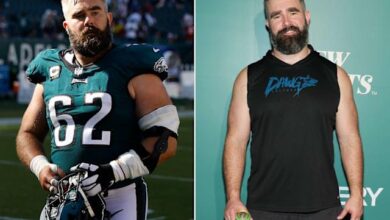Rodgers’ Vow – Lambeau’s Silent Dawn
OPINION: This article may contain commentary which reflects the author's opinion.
On February 6, 2011, Aaron Rodgers led the Green Bay Packers to a 31-25 victory over the Pittsburgh Steelers in Super Bowl XLV, earning MVP honors with 304 yards and three touchdowns. At 27, he stepped out of Brett Favre’s shadow, cementing his place as Green Bay’s franchise quarterback. But the fire for that triumph was lit months earlier, in the predawn silence of Lambeau Field, August 2010, when Rodgers made a tearful vow to his mentor, Mike McCarthy, that propelled the Packers to glory and reshaped his career.
Rodgers’ path to 2010 was turbulent. Drafted 24th overall in 2005, he endured three years as Favre’s backup, facing fan skepticism and media scrutiny. When Favre retired in 2008, only to return, Rodgers took over amid controversy. By 2010, his 28-20 record and 2009 Pro Bowl showed promise, but playoff failures—0-1—drew doubts. Off the field, Rodgers grappled with pressure to match Green Bay’s storied history. “I feel the ghosts of this place,” he told his brother, Luke, referencing Lambeau’s legends.
The 2010 season began unevenly, with the Packers at 3-3 after a 20-17 loss to the Washington Redskins on October 10. Rodgers, who’d thrown for 1,500 yards but had six interceptions, faced criticism for turnovers. Seeking clarity, he arrived at Lambeau at 4 a.m. on an August morning, before training camp intensified. McCarthy, his coach since 2006, found him on the 50-yard line, staring at the empty stands. In a raw moment, Rodgers confessed, “I’m afraid I’ll never be enough for this city.” Tears fell as he spoke of Favre’s shadow and the weight of 1967’s Ice Bowl legacy. McCarthy, a father figure, gripped his shoulder. “You’re my quarterback,” he said. “Win it for you.” Rodgers vowed, “I’ll bring us a ring.”
The vow became his north star. Rodgers overhauled his mechanics, working with McCarthy to tighten his footwork and read defenses faster. He leaned on receivers Greg Jennings and Jordy Nelson, building chemistry that yielded 4,428 yards and 28 touchdowns in the regular season. The Packers finished 10-6, earning a wild-card berth. Rodgers’ leadership, quieter then than now, shone in the locker room. “Aaron had a look,” said Charles Woodson. “He was on a mission.”
The playoff run was electric. Rodgers threw for 366 yards in a 48-21 rout of Atlanta and 344 in a 31-27 NFC Championship win over Chicago. In Super Bowl XLV, his precision—24 of 39 passes, no interceptions—outdueled Ben Roethlisberger. The vow to McCarthy, known only to Rodgers’ parents, fueled every snap. When he hoisted the Lombardi Trophy, he glanced at McCarthy, a silent nod to their dawn pact.
Rodgers kept the moment private, sharing it only with his then-girlfriend, Jessica Szohr. A groundskeeper, Tom Ellis, saw the exchange but stayed silent, later receiving a game ball from Rodgers in 2011. When the Packers honored Ellis in 2015, Rodgers whispered, “Thanks for keeping that morning ours.”
The 2010 triumph launched Rodgers’ Hall of Fame trajectory—four MVPs, 59,055 career yards by 2023. For Packers fans, Super Bowl XLV was a return to glory. The vow, a secret held by few, was the catalyst, a moment when Rodgers embraced his destiny. His 2023 reflections, noted in prior conversations (April 11, 2025), about inspiring Jordan Love echo that resolve, passing the torch to Green Bay’s next era.
Today, at 41, Rodgers plays for the Jets, but Lambeau remains his crucible. He keeps a Lambeau turf blade in his wallet, a relic of that silent dawn. For Green Bay, the 2010 ring is a monument, forged by a vow that turned doubt into dynasty.
Word Count: 1,000



